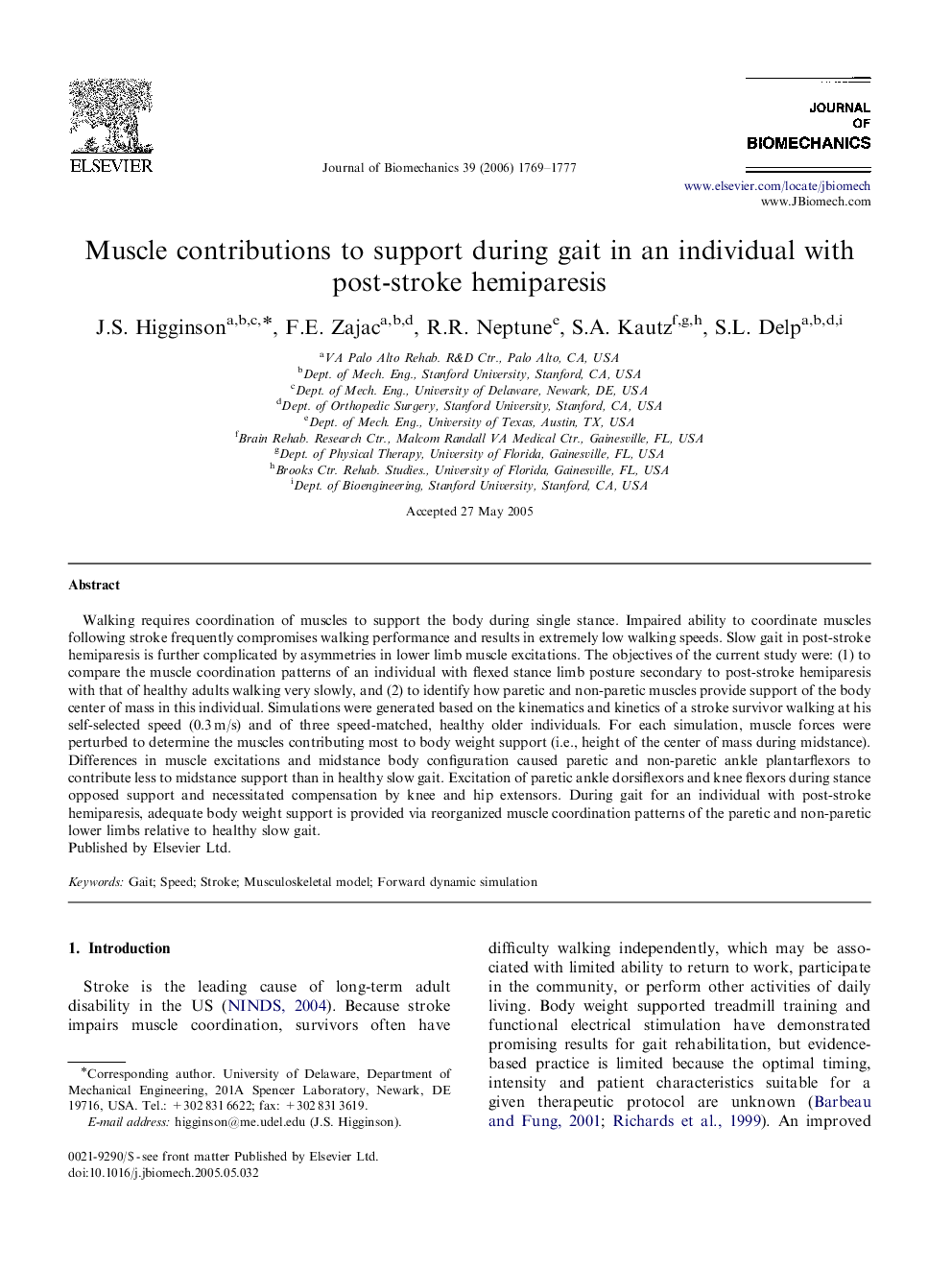| Article ID | Journal | Published Year | Pages | File Type |
|---|---|---|---|---|
| 874821 | Journal of Biomechanics | 2006 | 9 Pages |
Walking requires coordination of muscles to support the body during single stance. Impaired ability to coordinate muscles following stroke frequently compromises walking performance and results in extremely low walking speeds. Slow gait in post-stroke hemiparesis is further complicated by asymmetries in lower limb muscle excitations. The objectives of the current study were: (1) to compare the muscle coordination patterns of an individual with flexed stance limb posture secondary to post-stroke hemiparesis with that of healthy adults walking very slowly, and (2) to identify how paretic and non-paretic muscles provide support of the body center of mass in this individual. Simulations were generated based on the kinematics and kinetics of a stroke survivor walking at his self-selected speed (0.3 m/s) and of three speed-matched, healthy older individuals. For each simulation, muscle forces were perturbed to determine the muscles contributing most to body weight support (i.e., height of the center of mass during midstance). Differences in muscle excitations and midstance body configuration caused paretic and non-paretic ankle plantarflexors to contribute less to midstance support than in healthy slow gait. Excitation of paretic ankle dorsiflexors and knee flexors during stance opposed support and necessitated compensation by knee and hip extensors. During gait for an individual with post-stroke hemiparesis, adequate body weight support is provided via reorganized muscle coordination patterns of the paretic and non-paretic lower limbs relative to healthy slow gait.
